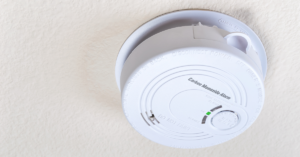Everything You Need to Know About Carbon Monoxide Alarms

When considering home safety, often the first things that spring to mind are smoke alarms and fire extinguishers, but there’s another silent danger lurking in our homes—carbon monoxide. This odorless, colorless gas can be deadly when inhaled. Carbon monoxide alarms serve as a crucial line of defense against this hidden threat. Let’s make sure you’re prepared to protect yourself and your loved ones.
What is Carbon Monoxide?
Carbon monoxide, or CO, is a toxic gas produced by incomplete combustion of carbon-based fuels, such as wood, gas, or oil. When gas stoves, furnaces, or fireplaces don’t burn fuel completely, CO can accumulate in your home. Breathing in high levels can cause serious health issues and even death.
How Do Carbon Monoxide Alarms Work?
Carbon monoxide alarms stand guard in your home, constantly monitoring the air for traces of CO. Relying on advanced sensor technology they can detect even tiny amounts. When the gas levels become dangerous, the alarm sounds, telling you to leave your home immediately and get help.
Where to Install Carbon Monoxide Detectors
You should install these alarms on every level of your home, including the basement and near sleeping areas. Place them at eye level, at least 15 feet away from fuel-burning appliances to prevent false alarms. Strategically placing them gives you complete coverage and early detection of carbon monoxide, bolstering your home’s safety.
Maintenance and Testing
Just like any other device, carbon monoxide alarms can malfunction over time. It’s recommended to test your alarms monthly, replace the batteries at least once a year, and replace the entire unit every 5–7 years. This diligence ensures your alarms are always in top working condition so they can effectively protect your family.
Recognizing Signs of Carbon Monoxide Poisoning
Carbon monoxide poisoning can be insidious. Its symptoms, such as headache, dizziness, nausea, and confusion often mimic the flu. If you or your family members experience these symptoms, especially if they improve when you leave the house and return when you’re back, it’s crucial to seek immediate medical attention. Carbon monoxide is a silent killer, and recognizing it can be a matter of life and death.
Carbon Monoxide Alarms: Your Home’s Lifeline
By understanding what carbon monoxide is, how these alarms work, where to place them, and the importance of regular maintenance, you’re protecting your family. Be sure to invest in reliable carbon monoxide alarms to create a safe home. For more information contact Holtzople today!













